
Lovćen National Park: Montenegro's Majestic Natural Gem
Explore the natural splendor and cultural heritage of Lovćen National Park, where Montenegro's majestic landscapes and rich history converge.
Nestled in the heart of Montenegro, Lovćen National Park offers visitors a breathtaking blend of natural beauty and historical significance. The park covers a vast area and is home to the iconic Lovćen Mountain, whose peaks provide stunning panoramic views of the Adriatic Sea and the surrounding landscapes. The park's diverse terrain includes dense forests, rugged cliffs, and serene meadows, making it a haven for nature lovers and adventure seekers alike. One of the park's most notable landmarks is the Njegoš Mausoleum, perched atop Mount Lovćen. This monumental tomb is dedicated to Petar II Petrović-Njegoš, a revered Montenegrin poet and ruler. Visitors can climb the 461 steps to the mausoleum to pay their respects and enjoy the awe-inspiring vistas from the summit. The journey to the top is both challenging and rewarding, offering glimpses of the park's rich flora and fauna along the way. Lovćen National Park is also a cultural treasure trove, with traditional Montenegrin villages dotting its landscape. These picturesque settlements offer a glimpse into the region's history and way of life. Visitors can explore ancient churches, sample local cuisine, and engage with the warm and welcoming locals. The park's well-marked trails and paths make it easy to navigate and discover its hidden gems, whether you are hiking, cycling, or simply enjoying a leisurely walk.
Local tips in Lovćen National Park
- Wear comfortable footwear for hiking, as the terrain can be challenging.
- Bring a jacket; temperatures can drop quickly at higher altitudes.
- Visit the Njegoš Mausoleum early in the day to avoid crowds.
- Try local dishes in the villages; they offer an authentic taste of Montenegrin cuisine.
- Carry water and snacks, especially if you plan on long hikes.
Lovćen National Park: Montenegro's Majestic Natural Gem
Nestled in the heart of Montenegro, Lovćen National Park offers visitors a breathtaking blend of natural beauty and historical significance. The park covers a vast area and is home to the iconic Lovćen Mountain, whose peaks provide stunning panoramic views of the Adriatic Sea and the surrounding landscapes. The park's diverse terrain includes dense forests, rugged cliffs, and serene meadows, making it a haven for nature lovers and adventure seekers alike. One of the park's most notable landmarks is the Njegoš Mausoleum, perched atop Mount Lovćen. This monumental tomb is dedicated to Petar II Petrović-Njegoš, a revered Montenegrin poet and ruler. Visitors can climb the 461 steps to the mausoleum to pay their respects and enjoy the awe-inspiring vistas from the summit. The journey to the top is both challenging and rewarding, offering glimpses of the park's rich flora and fauna along the way. Lovćen National Park is also a cultural treasure trove, with traditional Montenegrin villages dotting its landscape. These picturesque settlements offer a glimpse into the region's history and way of life. Visitors can explore ancient churches, sample local cuisine, and engage with the warm and welcoming locals. The park's well-marked trails and paths make it easy to navigate and discover its hidden gems, whether you are hiking, cycling, or simply enjoying a leisurely walk.
When is the best time to go to Lovćen National Park?
Iconic landmarks you can’t miss
Old Town
Discover the historical allure of Old Town Herceg Novi, where ancient architecture meets breathtaking Adriatic views.
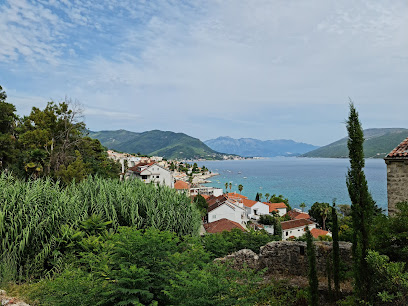
Kampana Tower
Explore the historic Kampana Tower in Kotor, offering breathtaking views and a glimpse into Montenegro's rich cultural heritage.
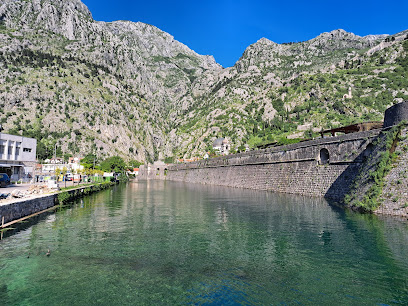
Kotor Fortress
Discover the stunning views and rich history at Kotor Fortress, an iconic landmark in Montenegro that offers a unique glimpse into the past.
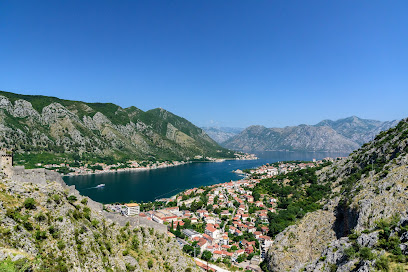
St. Tryphon's Cathedral
Discover the stunning St. Tryphon's Cathedral in Kotor, Montenegro, a remarkable blend of history, culture, and breathtaking architecture.

Mausoleum of Petar II Petrovic-Njegosh
Explore the Mausoleum of Petar II Petrovic-Njegosh, a historical landmark offering breathtaking views and a glimpse into Montenegro's rich cultural heritage.
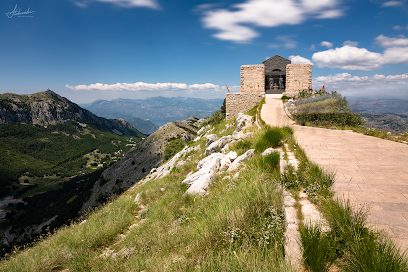
Church of Our Lady of Škrpjela
Explore the Church of Our Lady of Škrpjela, a serene baroque gem in Montenegro's Bay of Kotor, rich in culture and stunning views.
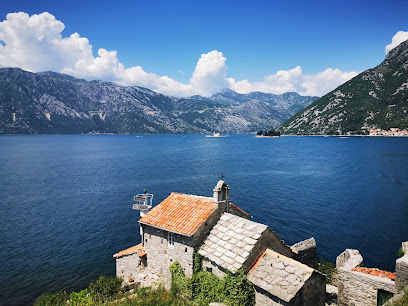
Lipa cave
Explore Lipa Cave in Montenegro - a stunning natural wonder with mesmerizing stalactites, unique geological history, and captivating guided tours.
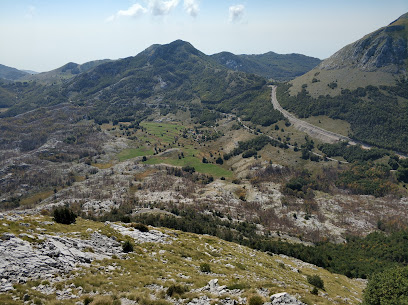
Kotor Serpentine
Explore the breathtaking Kotor Serpentine, a winding road offering stunning views of the Bay of Kotor and surrounding mountains in Montenegro.
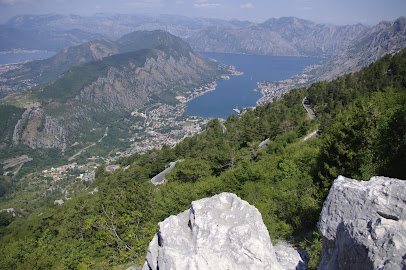
San Giovanni
Explore the rich history and stunning views at San Giovanni Fortress, a must-visit landmark in Špiljari, Montenegro.
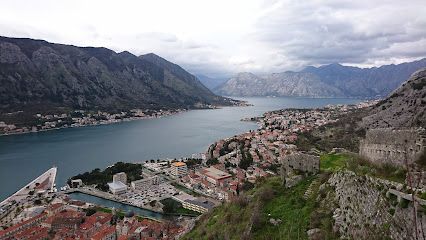
Lovćen
Discover Lovćen, Montenegro's iconic mountain peak, where breathtaking views, rich culture, and exhilarating hikes await every traveler.
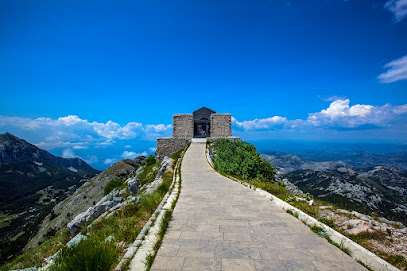
Kotor Cats Museum
Discover the enchanting Kotor Cats Museum, where feline history and culture come alive in the heart of Montenegro's beautiful old town.
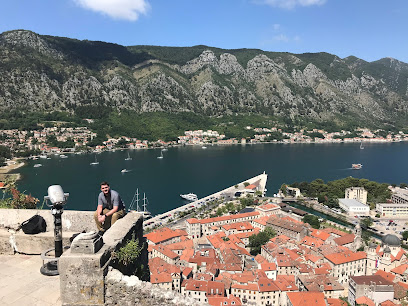
Fort Mogren
Discover the stunning Fort Mogren in Budva, Montenegro - a historic fortress offering breathtaking views of the Adriatic and a glimpse into the region's rich heritage.
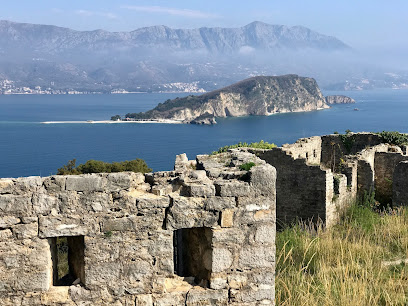
Fortress Gorazda
Discover the rich history and breathtaking views at Fortress Gorazda, a must-visit landmark in scenic Skaljari, Montenegro.
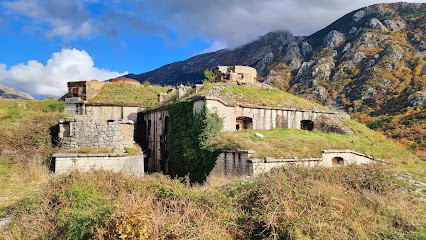
Saint Luke’s Church
Discover the historical and architectural beauty of Saint Luke's Church in Kotor, a must-visit Orthodox landmark that enchants every traveler.
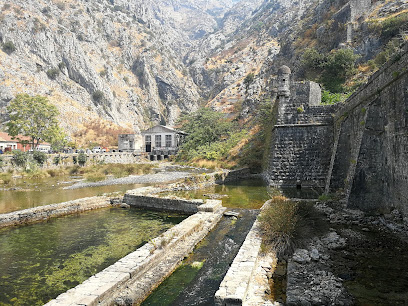
Old Town Road
Discover the historical charm of Old Town Road in Kotor, Montenegro, where medieval architecture meets breathtaking coastal views.
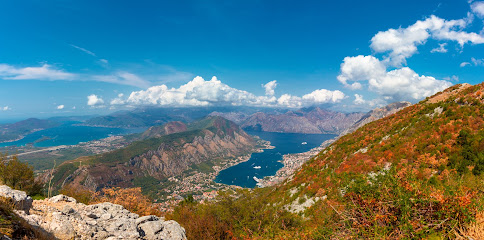
Unmissable attractions to see
Port of Kotor
Explore the breathtaking Port of Kotor, a UNESCO World Heritage site, where stunning natural beauty meets rich cultural heritage in Montenegro.
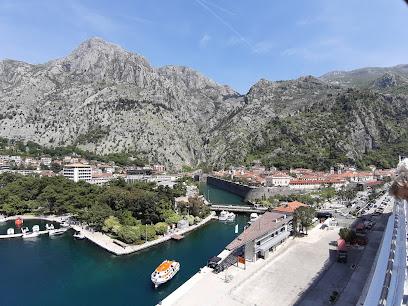
Bajova Kula
Discover Bajova Kula, a seafood restaurant in Dražin Vrt, Montenegro, known for fresh dishes and stunning Adriatic views.
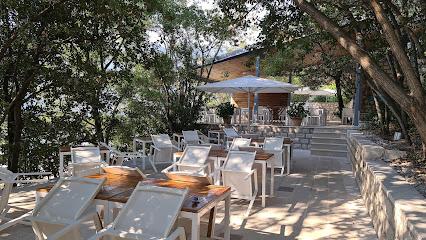
Kojan Koral
Discover adventure and natural beauty at Kojan Koral, your ultimate outdoor destination for ATV rentals and horseback riding in Gruda, Croatia.
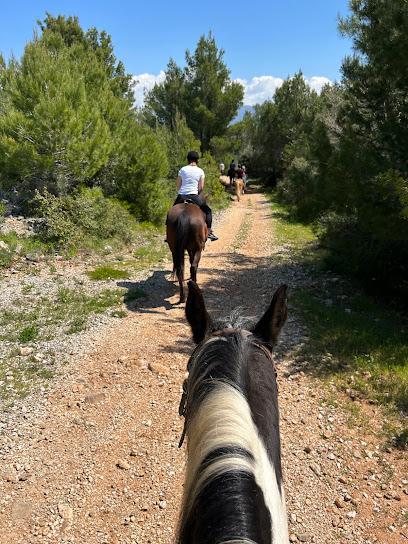
Ancient Doclea Ruins
Discover the Ancient Doclea Ruins in Podgorica, Montenegro - A captivating journey through Roman history amidst stunning landscapes.
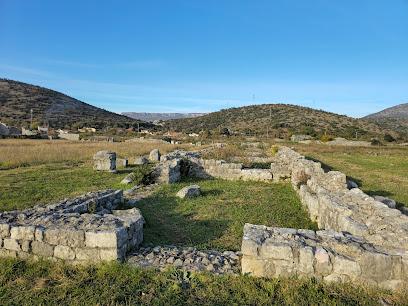
Mrkan Winery
Experience the finest of Montenegrin wines at Mrkan Winery, a hidden gem nestled in stunning Cetinje Municipality, perfect for wine lovers and tourists.
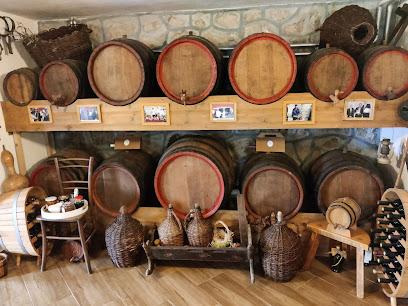
Njegoševa Rodna Kuća
Explore the birthplace of Petar II Petrović Njegoš, a cultural gem in Erakovići, Montenegro, offering rich history and beautiful landscapes.
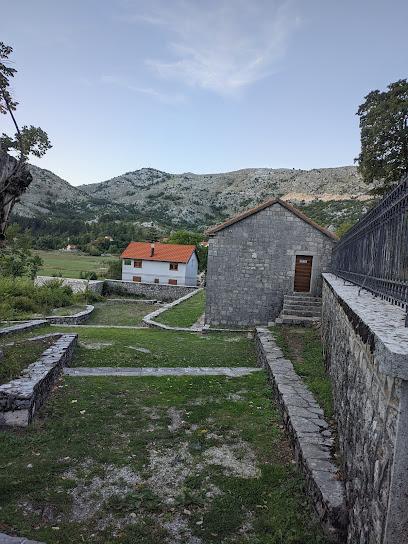
Church and Monastery of Our Lady of Mercy
Discover the tranquility and rich history of Gospa od Milosti, a serene island sanctuary in Montenegro’s stunning Bay of Kotor.

Gallery of Museum of Contemporary Art of Montenegro
Discover modern artistic expression at the Museum of Contemporary Art of Montenegro in Podgorica, a cultural gem showcasing local and international talent.
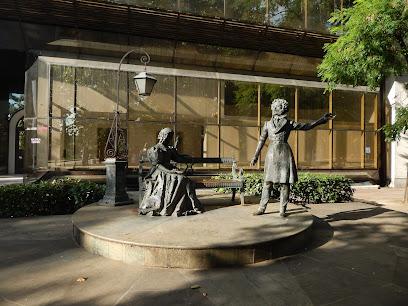
Viewpoint
Discover the spectacular vistas at Cetinje Viewpoint, your gateway to Montenegro's breathtaking landscapes and serene natural beauty.
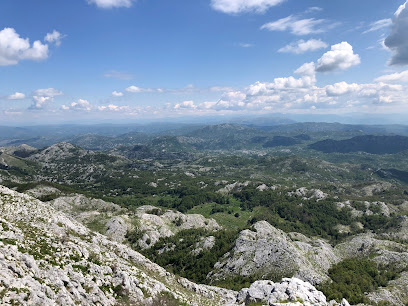
Trailhead for Lovcen National Park Tourist Information Centre
Discover the breathtaking trails and rich heritage of Lovcen National Park, a must-visit destination for hikers and nature enthusiasts in Montenegro.
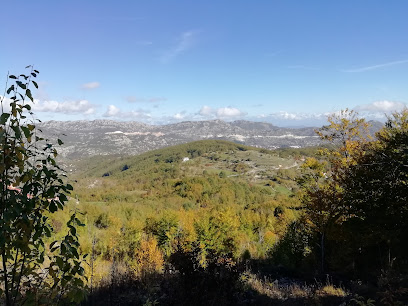
Essential places to dine
BBQ Tanjga
Experience authentic Montenegrin barbecue at BBQ Tanjga in Kotor - where flavor meets affordability in a charming setting.
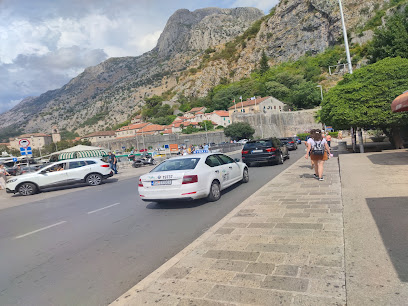
Restaurant City
Experience delightful Mediterranean flavors at Restaurant City in Kotor – perfect for families seeking memorable dining moments.
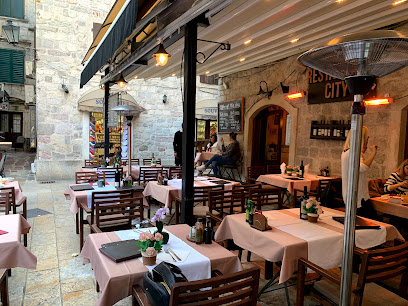
Restobar Taraca
Experience exquisite vegan cuisine at Restobar Taraca in Dobrota – where taste meets health in a picturesque setting.
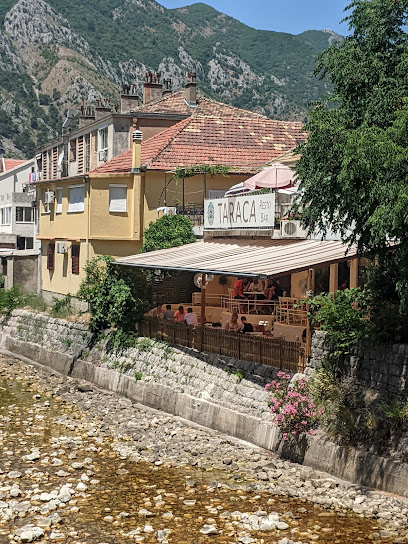
Konoba Scala Santa
Experience authentic Montenegrin cuisine with stunning views at Konoba Scala Santa in Kotor's beautiful Bay.
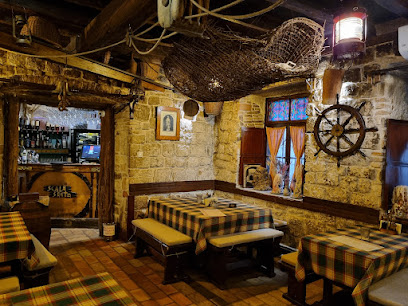
Marenda Steak House
Experience the best steaks in Montenegro at Marenda Steak House – where quality meets flavor in every bite.

Platanus
Discover authentic Montenegrin cuisine at Platanus in Dobrota—where every meal is paired with breathtaking views.
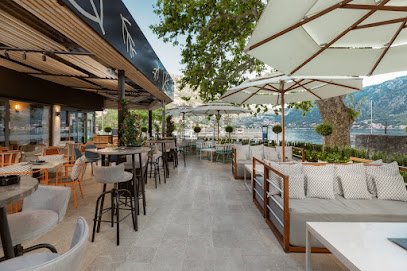
Ladovina Kitchen & Wine Bar
Experience the essence of Montenegrin cuisine at Ladovina Kitchen & Wine Bar in Kotor - where every dish tells a story.
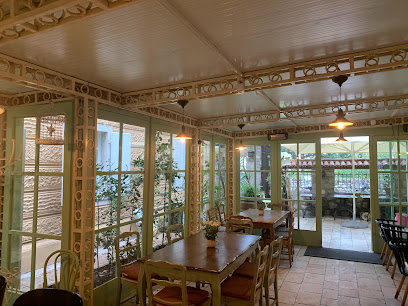
Restoran Cesarica
Discover authentic Montenegrin cuisine at Restoran Cesarica - a seafood haven in the heart of Kotor's historic old town.
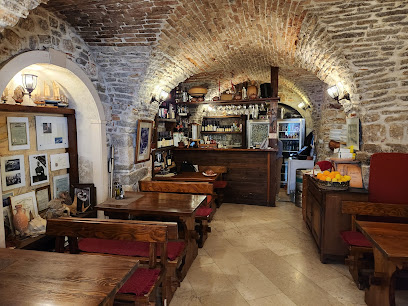
Restaurant PRŽUN
Experience exceptional flavors at Restaurant PRŽUN - where traditional Montenegrin cuisine meets modern culinary excellence in Kotor.
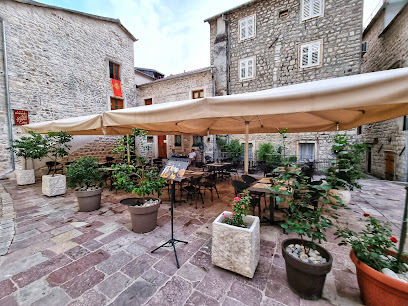
Konoba Roma
Discover the flavors of Montenegro at Konoba Roma, where traditional cuisine meets warm hospitality in Kotor's enchanting atmosphere.

Restaurant Galion
Experience exquisite seafood and Mediterranean cuisine with breathtaking views at Restaurant Galion in Kotor, Montenegro.
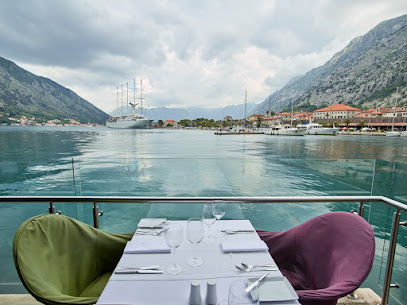
Ombra Restaurant
Experience the vibrant flavors of Montenegro at Ombra Restaurant in Kotor—where organic meets traditional Mediterranean cuisine.
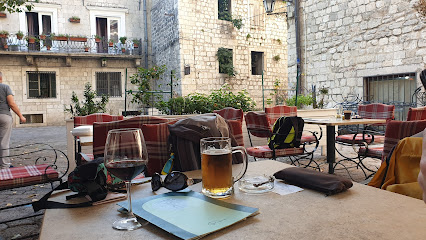
Pescaria Dekaderon
Experience authentic Montenegrin cuisine at Pescaria Dekaderon, where fresh seafood meets stunning views in Kotor.
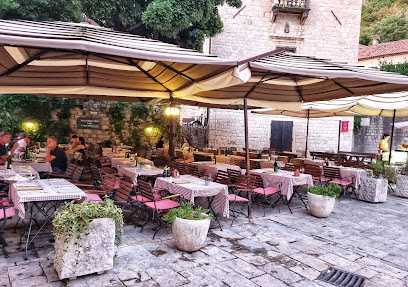
Lav Gastro Bar
Experience exquisite flavors at Lav Gastro Bar in Kotor - where local cuisine meets contemporary dining amidst breathtaking views.

INCONTRO BAR & FOOD
Discover Incontro Bar & Food in Skaljari: A culinary haven serving breakfast, burgers, pizza, and more amidst Montenegro's stunning scenery.
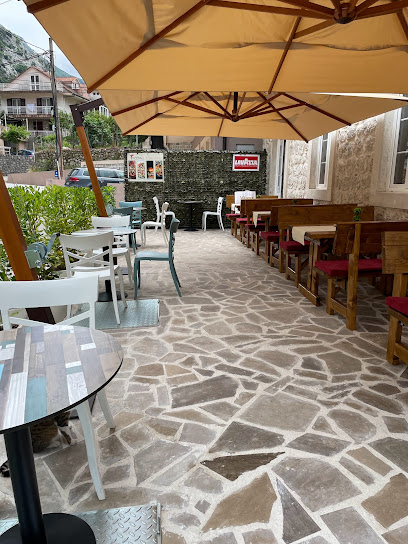
Markets, malls and hidden boutiques
Cats Of Kotor
Explore Cats Of Kotor, where unique handmade souvenirs celebrate the charm of Montenegro's feline culture.
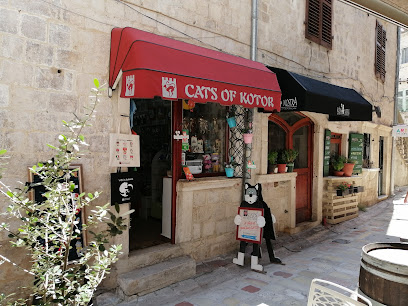
Hard Rock Cafe - Souvenir Rock Shop
Discover iconic memorabilia and local treasures at the Hard Rock Cafe - Souvenir Rock Shop in picturesque Kotor, Montenegro.
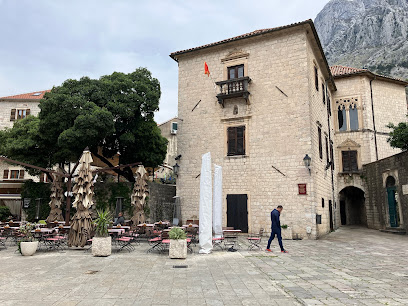
Kotorska Suvenirnica
Explore Kotorska Suvenirnica for unique souvenirs and handcrafted treasures that capture the essence of Kotor's rich cultural heritage.
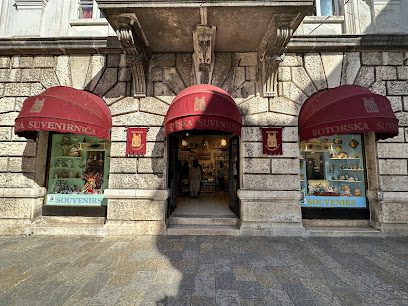
Danijela’s Shop
Explore Danijela's Shop in Kotor for unique handcrafted souvenirs and local artistry that capture the essence of Montenegro.
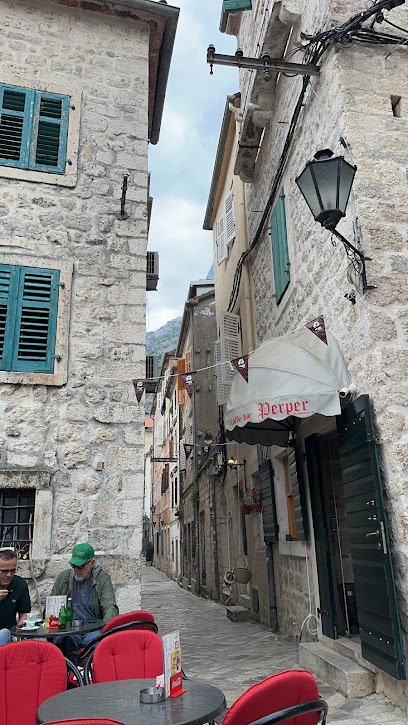
Souvenir Shop Montenegro
Discover the essence of Montenegro at the charming Souvenir Shop in Kotor, offering unique handcrafted treasures and local delights.
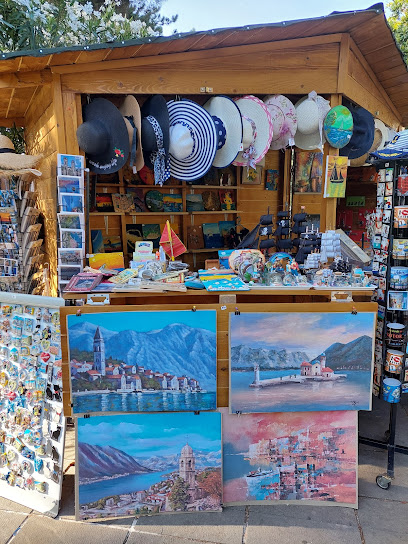
cornelia souvenir
Discover unique gifts and handcrafted souvenirs at Cornelia Souvenir in the heart of Kotor, capturing the spirit of Montenegro.
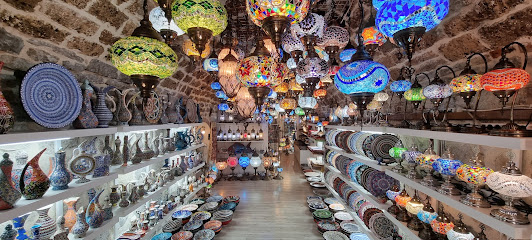
Kotor Souvenir
Explore Kotor Souvenir for authentic Montenegrin crafts and unique gifts in the heart of Kotor's historic old town.

Fine&Wine
Explore the exquisite flavors of Montenegro at Fine&Wine, Kotor's premier destination for local wines and gourmet delicacies.
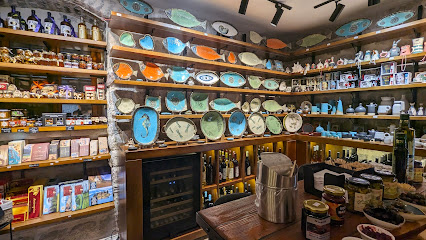
Sungun Souvenir Shop
Explore the heart of Kotor with unique gifts at Sungun Souvenir Shop, where local craftsmanship meets unforgettable memories.
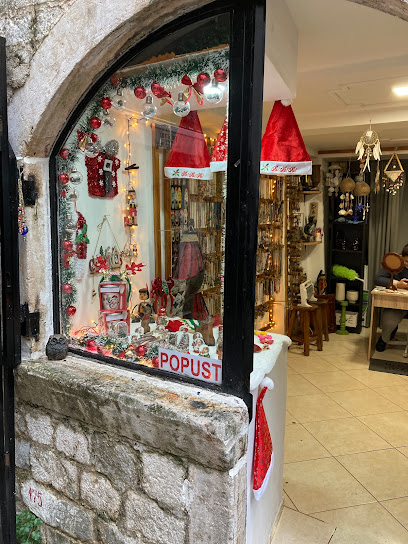
Vetus Oppidum ANTIQUE
Explore the enchanting world of antiques at Vetus Oppidum ANTIQUE in Kotor, Montenegro, and uncover the stories behind each exquisite piece.
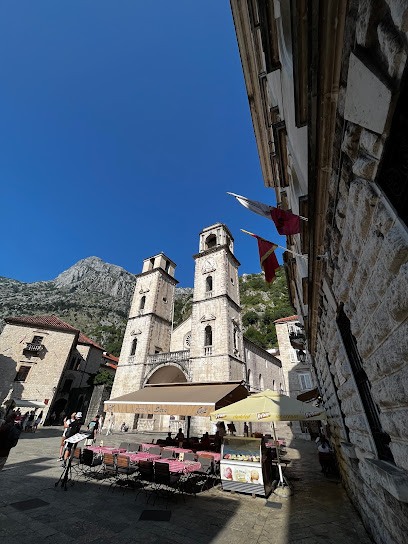
Vipex (Second Hand Shop Kotor)
Discover unique fashion at Vipex, Kotor's favorite second-hand shop, where sustainability meets style in every carefully curated piece.
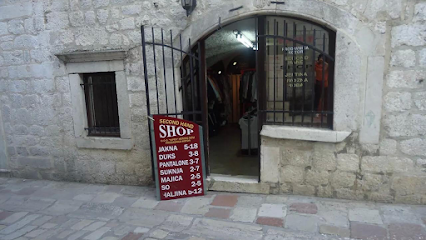
Bay Art & Souvenirs
Discover authentic Montenegrin crafts and unique souvenirs at Bay Art & Souvenirs in Budva Old Town, a perfect stop for every traveler.
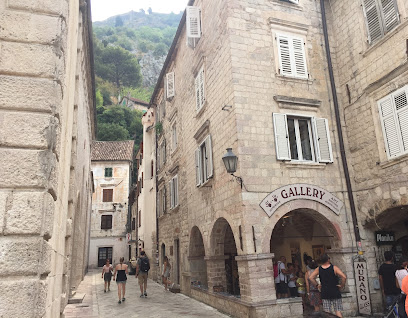
Turističko stajalište Panorama
Explore Turističko stajalište Panorama: Your gateway to authentic Montenegrin souvenirs in the heart of Špiljari.
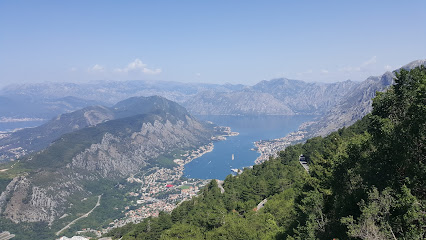
Gallery art
Discover unique handcrafted treasures at Gallery Art in Kotor, where local creativity meets captivating cultural heritage.

Antique Art
Explore Kotor's Antique Art: A Treasure Trove of Unique Collectibles and Rich History
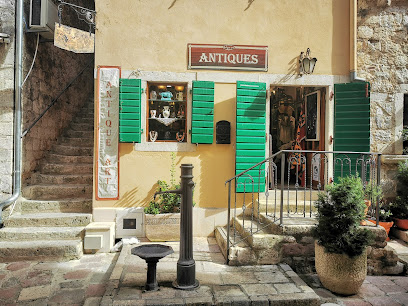
Essential bars & hidden hideouts
The Nitrox Pub & Eatery
Discover The Nitrox Pub & Eatery in Kotor, where vibrant cocktails and a warm atmosphere await you in Montenegro's historic heart.
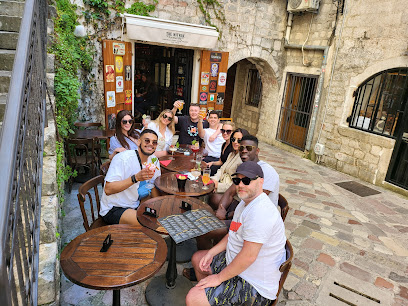
Horizont Bar
Experience the vibrant atmosphere and exquisite drinks at Horizont Bar, a stylish retreat in the heart of Cetinje, Montenegro.
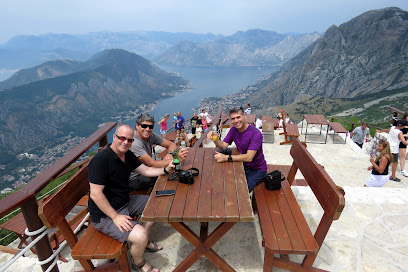
The Square Pub
Experience the heart of Kotor at The Square Pub, where local flavors and warm hospitality create an unforgettable dining experience.

Jazz Club Evergreen
Immerse yourself in the lively atmosphere of Jazz Club Evergreen, Kotor's top destination for live jazz music and delightful drinks.
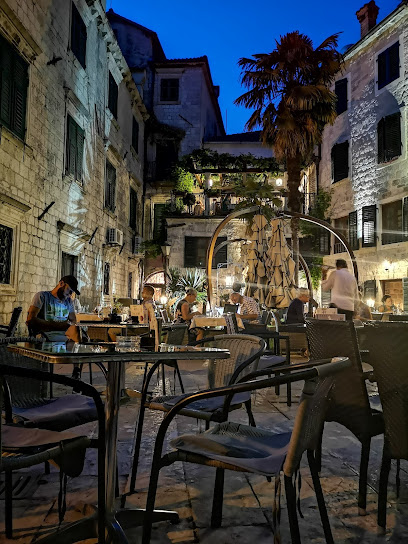
Vladika Restaurant
Experience the authentic taste of Montenegro at Vladika Restaurant, surrounded by the breathtaking beauty of Lovćen National Park.

Old Winery Wine Bar
Discover the charm of Kotor's Old Winery Wine Bar, where exquisite wines meet a cozy atmosphere and stunning views in Montenegro.
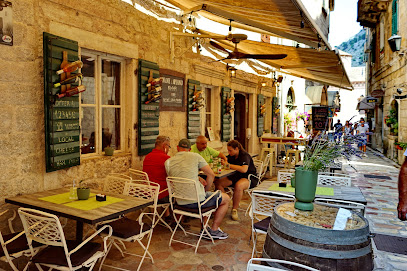
The Harbour Pub
Discover the charm of The Harbour Pub in Kotor, where delightful drinks and a welcoming atmosphere await every traveler.
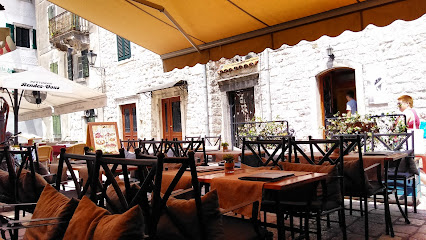
Letrika Caffe Bar
Discover Letrika Caffe Bar in Kotor - a perfect blend of local charm, vibrant atmosphere, and stunning views, ideal for every traveler.
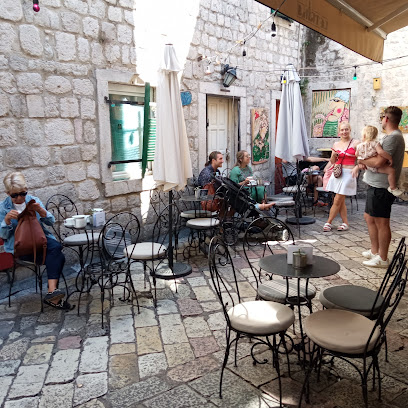
MojaKafanica Kotor
Discover the flavors of Montenegro at MojaKafanica, a top restaurant in Kotor offering a delightful mix of traditional and modern dishes.
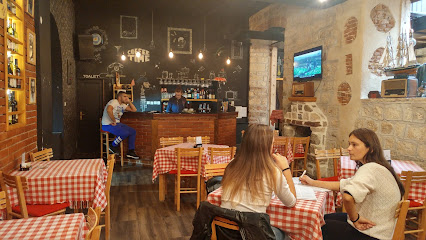
Oskar Beach Bar
Discover Oskar Beach Bar, a serene coastal retreat in Montenegro perfect for relaxation, drinks, and breathtaking sea views.
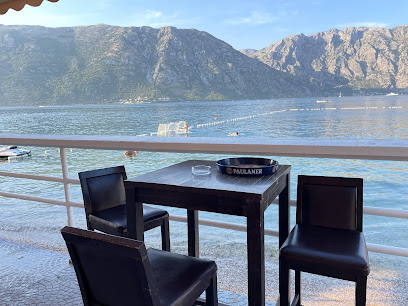
Klub Invalida
Discover the vibrant atmosphere and local charm of Klub Invalida, an affordable bar in Kotor, Montenegro, perfect for tourists and locals alike.
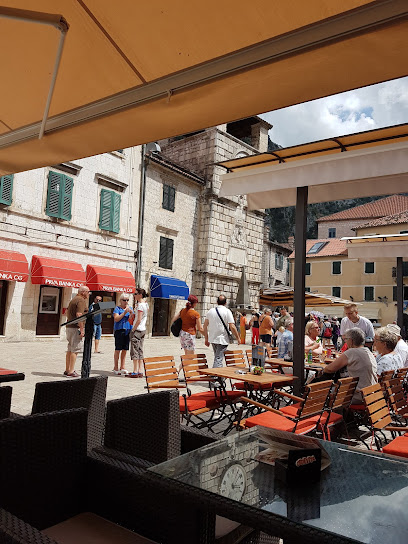
Scottish Pub Academia
Discover the delightful fusion of local flavors and Scottish charm at Scottish Pub Academia in the heart of Cetinje.
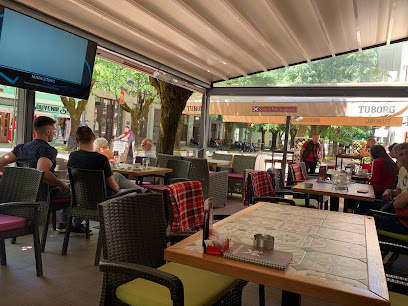
PUB AS
Experience the vibrant nightlife of Kotor at PUB AS, where local culture meets a cozy atmosphere and a diverse drink selection.
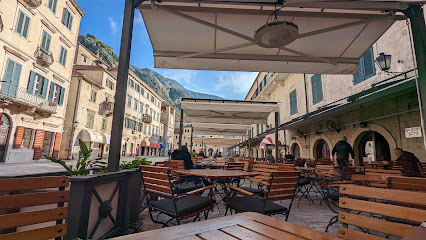
Onyx Bar & Garden
Discover the elegance of Onyx Bar & Garden in Porto Montenegro, where exquisite cocktails and stunning views create an unparalleled experience.
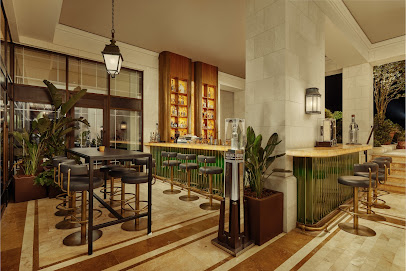
Holy Shot Bar
Discover Holy Shot Bar in Kotor: Your go-to destination for exceptional drinks and vibrant nightlife in Montenegro's historic Old Town.
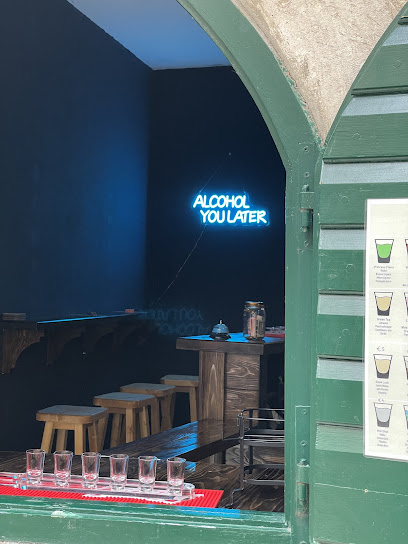
Local Phrases about Lovćen National Park
-
- HelloЗдраво
[Zdravo] - GoodbyeДовиђења
[Doviđenja] - YesДа
[Da] - NoНе
[Ne] - Please/You're welcomeМолим/Нема на чему
[Molim/Nema na čemu] - Thank youХвала
[Hvala] - Excuse me/SorryИзвините
[Izvinite] - How are you?Како сте?
[Kako ste?] - Fine. And you?Добро. А ви?
[Dobro. A vi?] - Do you speak English?Да ли говорите енглески?
[Da li govorite engleski?] - I don't understandНе разумем
[Ne razumem]
- HelloЗдраво
-
- I'd like to see the menu, pleaseЖелео/желела бих да видим мени, молим
[Želeo/želela bih da vidim meni, molim] - I don't eat meatНе једем месо
[Ne jedem meso] - Cheers!Здраво!
[Zdravo!] - I would like to pay, pleaseЖелео/желела бих да платим, молим
[Želeo/želela bih da platim, molim]
- I'd like to see the menu, pleaseЖелео/желела бих да видим мени, молим
-
- Help!Упомоћ!
[Upomoć!] - Go away!Иди даље!
[Idi dalje!] - Call the Police!Позовите полицију!
[Pozovite policiju!] - Call a doctor!Позовите лекара!
[Pozovite lekara!] - I'm lostИзгубио/изгубила сам се
[Izgubio/izgubila sam se] - I'm illБолестан/болесна сам
[Bolestan/bolesna sam]
- Help!Упомоћ!
-
- I'd like to buy...Желео/желела бих да купим...
[Želeo/želela bih da kupim...] - I'm just lookingСамо гледам
[Samo gledam] - How much is it?Колико кошта?
[Koliko košta?] - That's too expensiveТо је превише скупо
[To je previše skupo] - Can you lower the price?Можете ли спустити цену?
[Možete li spustiti cenu?]
- I'd like to buy...Желео/желела бих да купим...
-
- What time is it?Колико је сати?
[Koliko je sati?] - It's one o'clockЈедан сат је
[Jedan sat je] - Half past (10)Пола (10)
[Pola (10)] - MorningЈутро
[Jutro] - AfternoonПоподне
[Popodne] - EveningВече
[Veče] - YesterdayЈуче
[Juče] - TodayДанас
[Danas] - TomorrowСутра
[Sutra] - 1Један
[Jedan] - 2Два
[Dva] - 3Три
[Tri] - 4Четири
[Četiri] - 5Пет
[Pet] - 6Шест
[Šest] - 7Седам
[Sedam] - 8Осам
[Osam] - 9Девет
[Devet] - 10Десет
[Deset]
- What time is it?Колико је сати?
-
- Where's a/the...?Где је...
[Gde je...] - What's the address?Која је адреса?
[Koja je adresa?] - Can you show me (on the map)?Можете ли ми показати (на мапи)?
[Možete li mi pokazati (na mapi)?] - When's the next (bus)?Кад је следећи (аутобус)?
[Kad je sledeći (autobus)?] - A ticket (to ....)Једна карта (за ....)
[Jedna karta (za ....)]
- Where's a/the...?Где је...
History of Lovćen National Park
-
Lovćen holds a special place in Montenegrin history as the cradle of the country's identity. The rugged peaks and valleys served as a stronghold for the Montenegrin people, offering them protection and a strategic vantage point against invaders. It was here that the Montenegrin tribes united under the leadership of the Petrović Njegoš dynasty, forging a unified front against the Ottoman Empire in the 17th century.
-
One of Montenegro's most revered figures, Petar II Petrović-Njegoš, was both a ruler and a poet. His vision for a united and independent Montenegro was immortalized in his literary works and political actions. The Njegoš Mausoleum, located at the summit of Mount Lovćen, is a testament to his enduring legacy. Designed by the Croatian sculptor Ivan Meštrović, the mausoleum offers breathtaking views and serves as a pilgrimage site for Montenegrins and visitors alike.
-
The Battle of Vučji Do, fought on July 18, 1876, was a significant military engagement between Montenegrin and Ottoman forces. Located near Lovćen, this battle was a decisive victory for Montenegro and marked a turning point in their struggle for independence. The bravery and strategic prowess demonstrated by the Montenegrins continued to inspire future generations.
-
During World War I, Montenegro found itself on the front lines once again. In 1916, the Austro-Hungarian forces launched an offensive against Montenegro, capturing key positions including the Lovćen mountain range. Despite the occupation, Montenegrin resistance remained strong, and the spirit of defiance was palpable throughout the park's rugged terrain.
-
Lovćen National Park was officially established in 1952, recognizing the area's natural beauty and historical significance. Spanning over 62 square kilometers, the park encompasses diverse landscapes, from dense forests to rocky peaks. It serves as a sanctuary for various flora and fauna, as well as a living museum of Montenegro's rich cultural heritage.
-
Lovćen National Park is not only a natural wonder but also a cultural treasure trove. Traditional Montenegrin architecture, characterized by stone houses with wooden roofs, can be seen in the villages scattered throughout the park. These structures offer a glimpse into the past and the enduring way of life of the Montenegrin people. Additionally, the park hosts numerous cultural events and festivals, celebrating local traditions and folklore.
Lovćen National Park Essentials
-
Lovćen National Park is located in Montenegro, approximately 30 kilometers from the coastal town of Kotor. The nearest international airport is Tivat Airport, which is about 45 kilometers away. Additionally, Podgorica Airport is around 90 kilometers from the park. From either airport, you can rent a car or take a taxi to reach the park. Public buses also run from major cities like Kotor, Budva, and Cetinje to the park's vicinity.
-
Once within Lovćen National Park, the best way to explore is by car or on foot. There are several well-marked hiking trails throughout the park. Car rentals are available at both Tivat and Podgorica airports as well as in major cities. Taxis can be hired for day trips, but ensure to agree on a fare beforehand. Bicycles can also be rented in nearby towns for a more eco-friendly way to explore the park.
-
The official currency in Montenegro is the Euro (EUR). Credit cards are accepted at most hotels, restaurants, and shops, but it's advisable to carry some cash, especially for smaller establishments and remote areas within the park. ATMs are available in nearby towns such as Cetinje and Kotor, so make sure to withdraw sufficient cash before heading into the park.
-
Lovćen National Park is generally a safe destination for tourists. Standard travel precautions apply: avoid leaving valuables unattended and be cautious when hiking, as some trails can be challenging. There are no specific high-crime areas targeting tourists within the park. However, it is always wise to stay vigilant and aware of your surroundings.
-
In the event of an emergency, dial 112 for immediate assistance. The nearest medical facilities are located in Cetinje, which is about 20 kilometers from the park. It is highly recommended to have travel insurance that covers medical emergencies. For minor health issues, there are pharmacies in Cetinje and Kotor where you can purchase over-the-counter medications.
-
Fashion: Do dress comfortably and in layers, as the weather can change rapidly in the mountains. Avoid wearing high heels or flip-flops when hiking. Religion: Do respect local customs and traditions. When visiting religious sites such as the Njegoš Mausoleum, dress modestly and behave respectfully. Public Transport: Do be respectful and give up your seat to elderly passengers. Don't eat or drink on public transport. Greetings: Do greet people with a friendly 'Zdravo' (Hello) or a handshake. Eating & Drinking: Do try local specialties like Njeguški pršut (smoked ham) and cheese. Don't refuse hospitality, as it is considered impolite.
-
To experience Lovćen National Park like a local, plan your visit during the early morning or late afternoon to avoid crowds and enjoy the tranquility. Engage with park rangers and local guides, who can provide valuable insights into the park's history and natural features. Don't miss the chance to climb to the Njegoš Mausoleum for breathtaking views. Try to visit nearby attractions such as the old capital, Cetinje, and the village of Njeguši, known for its traditional Montenegrin cuisine.
Trending Landmarks in Lovćen National Park
Nearby Cities to Lovćen National Park
-
Things To Do in Kotor
-
Things To Do in Budva
-
Things To Do in Tivat
-
Things To Do in Perast
-
Things To Do in Herceg Novi
-
Things To Do in Podgorica
-
Things To Do in Bar
-
Things To Do in Nikšić
-
Things To Do in Trebinje
-
Things To Do in Ulcinj
-
Things To Do in Dubrovnik
-
Things To Do in Lezhë
-
Things To Do in Bajram Curri
-
Things To Do in Peja
-
Things To Do in Krujë









